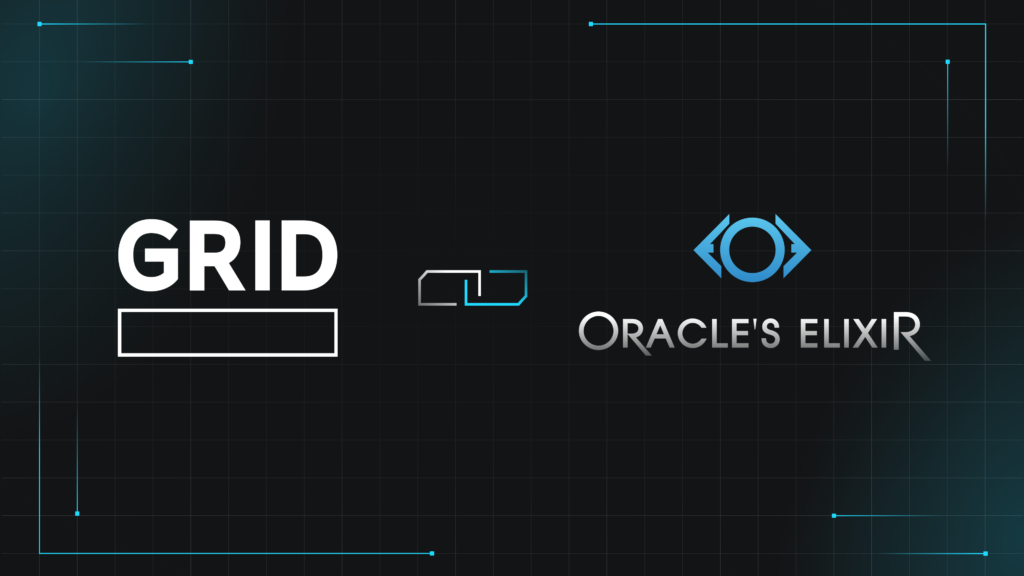Introduction
Welcome to the GRID Partner Spotlight series, which highlights the incredible partners from the GRID ecosystem who help unlock the potential of esports data for everyone. This time the spotlight lands on Oracle’s Elixir, a leading name in League of Legends esports analytics that is now expanding to provide insights, data, and stats for VALORANT, all powered by GRID official data. Continue reading to learn more about the project and hear from Tim himself on why he decided to expand into VALORANT and why official data matters.
About Oracle’s Elixir & Tim
Oracle’s Elixir is an esports, gaming, and data science website and community founded by Tim “Magic” Sevenhuysen. It has been a cornerstone in the esports analytics community known for its advanced stats and in-depth analysis for League of Legends.
Since 2015, esports stats and analysis from Oracle’s Elixir have been relied on by professional coaches, analysts, broadcasters, writers, daily fantasy competitors, and hardcore fans.
It’s hard to imagine a person better than Tim to explore the depths of esports data and improve its accessibility for everyone. Tim has almost a decade of professional experience working with esports data, including roles like Director of Esports Analytics at 100 Thieves. Earlier this year, Tim joined GRID as a Senior Business Data Consultant, supporting teams utilizing GRID’s League of Legends, VALORANT, and Rainbow Six Siege Data Portals, per a release.
How Oracle’s Elixir uses GRID Data
Whatever league or region you follow, Oracle’s Elixir is where you will find the most comprehensive, in-depth player and team analytics. Many advanced metrics on Oracle’s Elixir are unavailable anywhere else, from the number of neutral objectives players steal to the number of turret plates teams destroy. Stats can be extensively filtered and sliced to give context to the numbers. If the flexible filters on the website aren’t enough, there’s also free downloadable data that the community can use non-commercially to answer their questions or pursue their projects.
These stats and features need data to power them, and that’s where GRID comes into the picture. Oracle’s Elixir’s unique metrics and predictive models are powered by official esports data feeds exclusively available through the GRID APIs.
GRID’s access to real-time Riot Games esports data results from a partnership with Riot Games, which established GRID as their exclusive official esports data provider for both VALORANT esports and League of Legends esports. This partnership recognizes the importance of reliable and secure data handling in competitive gaming. It upholds the integrity of esports by ensuring that live data distribution is controlled and protected against misuse. Access to data is granted to trusted partners who can contribute to building a sustainable ecosystem.
“One of the main reasons I wanted to build this was to show how the GRID Data Platform can help grow the overall esports scene and benefit the teams, fans, and everyone else. Access to official data is an imperative for accurate and reliable stats.” – Tim Sevenhuysen, founder of Oracle’s Elixir
To find out more about Oracle’s Elixir for VALORANT we decided to ask at the source and chat to Tim.
- What inspired you to expand Oracle’s Elixir from League of Legends to VALORANT?
I’ve always been fascinated by the analytical opportunities in tactical FPS. While I was the Director of Esports Analytics at 100 Thieves I had an opportunity to dive in to VALORANT data and develop a strong understanding of the available data and the possible metrics and predictive models that make sense for VALORANT. After I joined GRID, I saw that the time was right to bring what I had learned to the broader community, so I started working on the data pipelines and website for OE VALORANT. And now the first release is ready! - Oracle’s Elixir is a LoL item. Have you considered any other names?
That’s right: when I launched Oracle’s Elixir for LoL in 2015, Oracle’s Elixir was a consumable item that gave you vision of invisible things. I thought that was a fun metaphor for the power of analytics. In hindsight, it wasn’t the greatest name choice, because it’s a bit of a mouthful and not the easiest to spell… But the name has a lot of legacy now, so I’m hoping the VALORANT newcomers will forgive me for sticking with it and keeping the branding consistent across both websites! - Can you share some challenges you faced during this expansion to VALORANT and how you overcame them?
When I first started building the VALORANT data pipelines, I worried that I would have to write everything entirely from scratch. Luckily, this has been less challenging than I feared, since GRID’s APIs are game-agnostic. That helped me set up a compatible baseline across the two projects, so I could more quickly move on to the more complex aspects of the project, like the predictive modeling that powers the Rounds Above Replacement (RAR) player ratings. - How does the GRID Data Platform enhance the capabilities of Oracle’s Elixir?
OE VALORANT wouldn’t exist without the GRID Data Platform. The main reason for Oracle’s Elixir to exist is to provide the community with access to more advanced analytics than they can get on other platforms. The most advanced analytics I’ve developed for VALORANT, like RAR and Consistency, rely on data points that are only available through GRID. - What unique insights can VALORANT fans expect from Oracle’s Elixir that they won’t find elsewhere?
The most unique metric on OE VALORANT is definitely Rounds Above Replacement (RAR). It’s a similar system to Wins Above Replacement (WAR) from baseball. It works by evaluating individual actions within each round, measuring the amount those actions move the player’s team forward in round win probability, and then normalizing those contributions based on the player’s agent, the map they’re on, and some other factors. By constantly tracking each player’s contributions to win probabilities, we can measure how valuable they are to their team’s success. You can read more about RAR on the website. - How do you see the role of data evolving in the esports industry over the next few years?
There will always be untapped potential in data, in any industry, and esports is no exception. In LoL, virtually every pro team works with data daily, to varying levels of complexity, whether they have full-time in-house analysts or developers who work directly with the GRID APIs or whether they rely on sites like Oracle’s Elixir to get their insights. In VALORANT, more teams are beginning to recognize and leverage the power of data in their match prep and roster-building, and I’m confident that the release of OE VALORANT will help to accelerate that adoption and empower more teams, broadcasters, and fans to incorporate data into what they do.
Conclusion
Oracle’s Elixir continues to set the benchmark for esports analytics, now bringing its expertise to the fast-growing world of VALORANT. With the power of GRID’s data platform, it promises to deliver unparalleled insights, benefiting teams, fans, and the broader esports community. Stay tuned for more updates and in-depth analyses from Oracle’s Elixir as it revolutionizes how we understand and engage with VALORANT esports and make sure to visit the website val.oracleselixir.com


